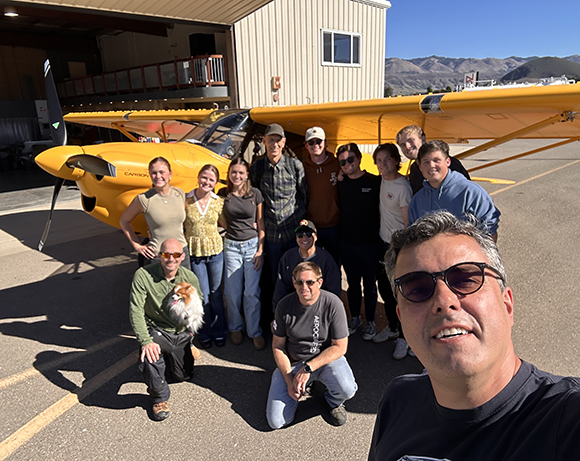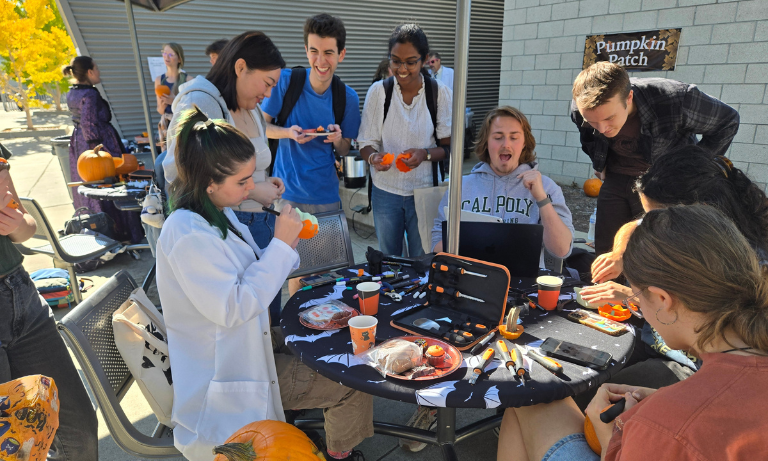Cal Poly aerospace engineering Professor Paulo Iscold directed a high-altitude flight test on Oct. 28, 2025, that sent a lightweight Carbon Cub UL to 37,609 feet over California’s Central Coast. The climb exceeded the altitude mark for Cub-style airplanes set in 1951.
The flight departed San Luis Obispo County Regional Airport at 9:55 a.m. and reached peak altitude after about an hour of climbing in temperatures near minus 51 degrees Fahrenheit. Test pilot Jon Kotwicki flew the aircraft while Iscold served as project manager and flight test lead.
For Iscold, the day was about more than setting a new mark. He turned the flight into a live lesson for his students, who listened as he coordinated with the pilot and air traffic control during class.
“Teaching by doing, together is what we want them to experience,” Iscold said. “These were airline pilots on the frequency, and students listened to all of it, live.”
Although it was not filed as an official Fédération Aéronautique Internationale (FAI) record attempt, the flight climbed higher than the 30,203-foot altitude set in 1951 by aviator Caro Bayley in a Piper Super Cub, and it also topped the official ultralight mark of 35,062 feet set in 1996. That gave Cal Poly students a front-row seat to a rare, real-time test of a classic bush-plane configuration operating in stratospheric air.
“This is my 17th aviation record, and it was one of the most fun to go after,” Iscold said. “In test flying, we plan for everything to go wrong. When everything goes right, that’s the flight you wanted. That’s the flight we got.”
Interim College of Engineering Dean Robert Crockett said the project is a clear example of Cal Poly’s Learn by Doing philosophy.
“What Paulo did here is take world-class flight test work and put students right alongside it,” Crockett said. “They heard the planning, the procedures, the coordination with air traffic control, and they saw how careful engineering makes something like this possible. That’s exactly the kind of experience that prepares our students for aerospace careers.”
The plane was provided by CubCrafters, which develops high-performance backcountry aircraft, and in this configuration it was powered by a turbocharged Rotax 916 iS engine. Local partner Aerocrafted supported the test with facilities and ground equipment, and Mountain High Equipment & Supply provided the supplemental oxygen system used at altitude.
Kotwicki said the airplane remained controllable even at extreme altitude and drew the attention of airline traffic in the area, surprised to hear a Cub at 37,000 feet.
Cal Poly’s Aerospace Engineering Department is nationally recognized for its Learn by Doing approach, which puts students alongside faculty and industry partners on real flight, spacecraft and systems projects.
By Emily Slater


